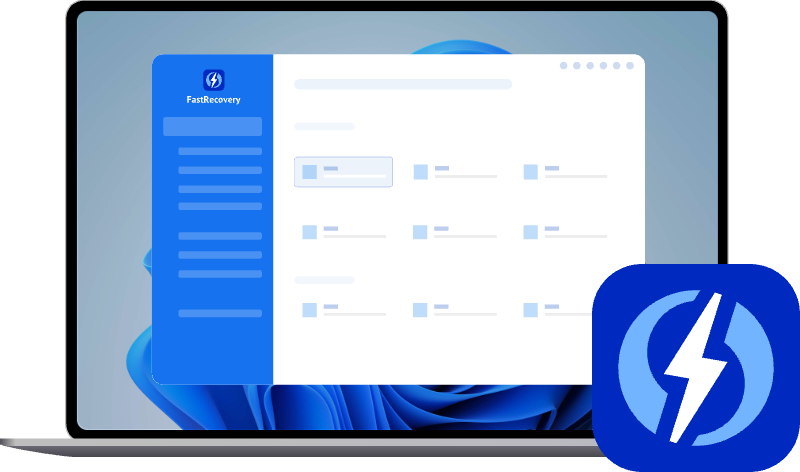How to Recover Deleted MOV Files?
How to recover deleted MOV files? This guide shares several free solutions including professional MOV file recovery software with you.
How do I recover a MOV file?
A MOV file is a multimedia container file format, saved in QuickTime File Format (QTFF). We are involved in the world of MOV files because we often use MOV files to save movies, videos, and audio. Have you faced this heartbreaking issue just like the following user?
Some important MOV files appear to have been deleted from my system. Is it possible to run a program to determine if the files were gone? Are they recoverable? Any help is greatly appreciated.
- A user from MacRumors
For newcomers, it’s not always easy to recover deleted MOV files. But don’t be upset! Because these deleted MOV files can be recoverable under any circumstances. Read further to get explicit solutions for MOV file recovery.
How to recover deleted MOV files?
As stated earlier, it’s accessible to recover deleted MOV files containing permanently deleted ones. Because these deleted MOV files might still hide or be saved on the SD card before new data writing in.
Way 1. Recover deleted MOV files from the Recycle Bin
If you deleted your MOV files several days ago, you can recover the deleted files from recycle bin. If you’re unsure the deleted MOV file is still in the recycle bin, you can check it first. Here’re the relevant steps.
Step 1. Double click on the Recycle Bin icon on your Desktop.
Step 2. Select the MOV files you need after opening your Recycle Bin.
Step 3. Right-click on your desired MOV files, then click “Restore”. You can also drag your desired MOV files out of the Recycle Bin directly.
Way 2. Recover hidden MOV files using CMD
Most Windows operating systems provide a command-line interpreter program called Command Prompt. It is used to carry out entered commands to resolve specific Windows issues like managing the running process. Similarly, you can also recover files using the command prompt. These steps depict how to use CMD to recover hidden MOV files.
Step 1. Press the “Winkey/Start + Q” keys to open your search box. Then input “cmd” and select “Run as administrator”.
Step 2. Input chkdsk ‘drive letter’:/f and press the Enter key in the Command Prompt window.
(‘drive letter’ means the drive letter of the certain drive that includes your deleted MOV files before deletion. For instance, it’s G drive in the reference pic.)
Step 3. Press Y and wait for the command line to finish. Then enter your drive letter again and press Enter.
Step 4. Type attrib -h -r -s /s /d *.* and press Enter. Then wait patiently and you can get your recovered MOV files.
Way 3. Recover deleted MOV files with Windows File Recovery
How to recover deleted MOV files? In this section, you can use free Windows File Recovery (command-line software) for MOV file recovery. Windows File Recovery needs to work with Windows 10 build 19041or later from the Microsoft Store.
Windows File Recovery allows you to recover the deleted MOV files from your internal and external drives and USB devices. There’re two basic modes (Regular, Extensive) and two advanced modes (Segment and Signature).
|
Parameter / switch |
Description |
Supported mode(s) |
|
/regular |
Regular mode, the standard recovery option for non-corrupted NTFS drives |
Regular |
|
/extensive |
Extensive mode, a thorough recovery option suitable for all file systems |
Extensive |
|
/segment |
Segment mode, recovery option for NTFS drives using file record segments |
Segment |
|
/signature |
Signature mode, recovery option for all file system types using file headers |
Signature |
Because there’s no graphical user interface, you’re supposed to adjust this command line for varied modes and switches: winfr source-drive: destination-drive: [/modes] [/switches] Then you can input the adjusted CMD in the Command Prompt window.
- Notes:✎...
- The source and destination drives must be different. The former drive contains your deleted MOV files before deletion. The latter drive is used to save recovered MOV files.
- If possible, stop using your PC. Because any use of the computer might create files, which may increase the possibility to overwrite the free space on your computer.
- Windows file recovery utility may offer you more details about this application.
- Click “This PC” and right-click on your source drive, then click “Properties” to check your file systems.
Step 1. Enter "Windows File Recovery" in the search box of the Microsoft Store, then click “Get”. Install it on your PC after downloading.
Step 2. Input "Windows File Recovery" in the search bar, then click the “Run as administrator” button.
Step 3. After checking your file systems, select the most suitable mode with the following tips.
- ★Tips:
- If MOV files (NTFS file system) were deleted recently, the Regular mode is your best option.
- Apart from that, you can use the Extensive mode.
Step 4. Resemble command lines with some common syntax below.
|
Switches |
Meaning |
Supported mode(s) |
|
/n |
Filter the scan range: scans for a specific file with its file name/path/type, etc. |
All |
|
/y: |
Recover specific extension groups. |
Signature |
|
/k |
Recovers system files. |
NTFS Segment |
|
/u |
Recovers undeleted files, for example, from the Recycle Bin. |
NTFS Segment |
For example: Enter winfr C: E: /r /n *. MOV, then you can recover MOV files from the source C drive to your destination E drive.
Step 5. Press “y” to continue. The size of your source drive has an impact on the process. So please wait patiently. If you want to stop the recovery process, press Ctrl + C.
AOMEI FastRecovery (most recommended)
If you want to improve the speed and the rate of data recovery, you can seek help from AOMEI FastRecovery. It could apply to broader data loss scenarios in Windows.
This powerful software saves you from being worried about accidental deletion, intentional deletion, formation, or system crash. And you're allowed to recover Word, PPT, Excel, Photos, Videos, Audios, Emails, Web pages, Compressed files from HDD/SDD.
High compatibility makes it possible to support NTFS, FAT32, exFAT, and ReFS in Windows 11/10/8/7 & Windows Server. So why not download and check it out for yourself?
Step 1. Install and run AOMEI FastRecovery on your PC. Hover the mouse over the partition/disk including your MOV files before deletion. Then click Scan.
Step 2. Automatically Quick Scan & Deep Scan can find your deleted files and other lost files.
Step 3. Click "Recover x files" to retrieve your desired data and save it in your destination path.
In conclusion
How to recover deleted MOV files? This guide offers you several feasible methods to recover MOV files. And you’re expected to check the Recycle Bin first to avoid going further. CMD is a troubleshooting tool for users to recover permanent files. But it is hard for inexperienced users to operate with the command prompt.
Are you seeking more efficient methods to tackle this problem? Compared with WinfrGUI, AOMEI FastRecovery is the most recommended software because of the highlights above.
Furthermore, you'd better create regular backups using freeware backup software, AOMEI Backupper to make a differential/automatic backup, etc. Does this guide give you some inspiration?


